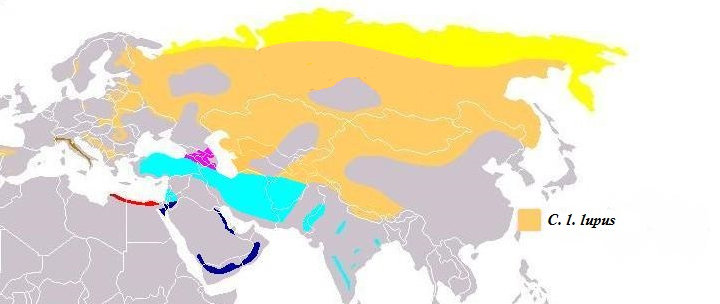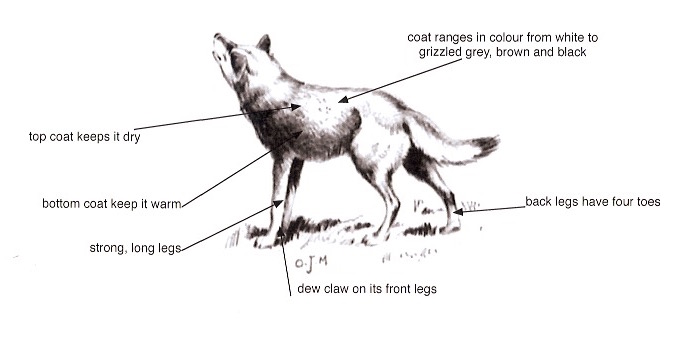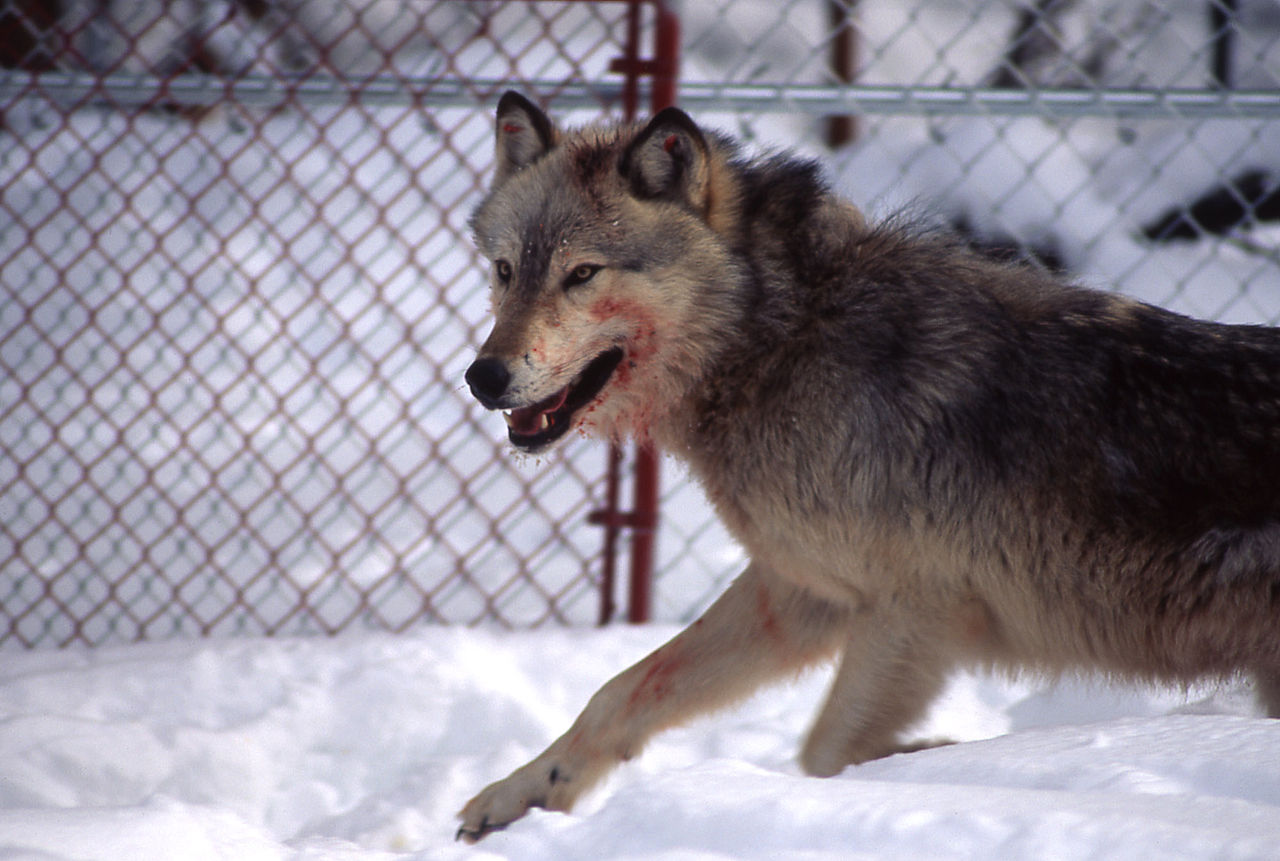Eurasian Wolves
Introduction
Did you know that wolfwolves are the biggestbiggest dog in the caninecanine family? FoxesFoxes and dingoesdingoes are wolves’ cousins.cousins. They live in forests, steppe, tundratundra and mountainsmountains in EuropeEurope and North America.America.
Present Distribution of Eurasian Wolf
Looks Wolves have coats that range in colour from white to grizzled-grey,grizzled-grey, brown and black. Wolves have two coats. The top coat keeps them dry and the bottom coat keeps them warm. They have long legs. On their back legs they have four toes but on their front legs they have an extraextra toe up on the leg. It is called a dew claw.
Wolves have coats that range in colour from white to grizzled-grey,grizzled-grey, brown and black. Wolves have two coats. The top coat keeps them dry and the bottom coat keeps them warm. They have long legs. On their back legs they have four toes but on their front legs they have an extraextra toe up on the leg. It is called a dew claw.
Moves This wolf has eaten prey that he caught in the snow.Wolves are good hunters.hunters. They hunt in packs to chase down the young, old, slow and sick prey. They can run about 65 kilometreskilometres per hour.
This wolf has eaten prey that he caught in the snow.Wolves are good hunters.hunters. They hunt in packs to chase down the young, old, slow and sick prey. They can run about 65 kilometreskilometres per hour.
Eats
Wolves eat deer, elk, moose, beavers, rabbits,rabbits, squirrelssquirrels and birds.
Grows
Wolves live in packs of five to twenty animals. They mate in February to March. The mother has two to eight cubs after 65 days.
Dangers
People are the main danger for wolves. They are scaredscared of them so huntershunters and farmersfarmers kill them. Wolves nearly disappeareddisappeared but they are returning.returning.
Conclusion
| Fact Box |
|
Wolves have good hearing, sharp eyesight and a good sense of smell.
|
Wolves look a lot like GermanGerman ShepherdShepherd dogs. They are dangerousdangerous carnivores.carnivores. They run fast to chase down their prey. They live in packs. I think it is good that wolves are no going to become extinct.extinct.
Glossary
| canine | name for the dog family |
| carnivores | meat eaters |
| dingoes | wild dogs from Australia |
| elk | a kind of deer |
| grizzled | coloured tips of hair |
| moose | the largest kind of deer |
| steppe | grassy plains |
| tundra | area where the subsoil is always frozen |
Bibliography
Mrs Nunweek's Fact File
My Best Book of Wolves and Wild Dogs, published by Kingfisher in 2003
By Liam
{chronoconnectivity5}L2L_NF2_Feedback{/chronoconnectivity5}